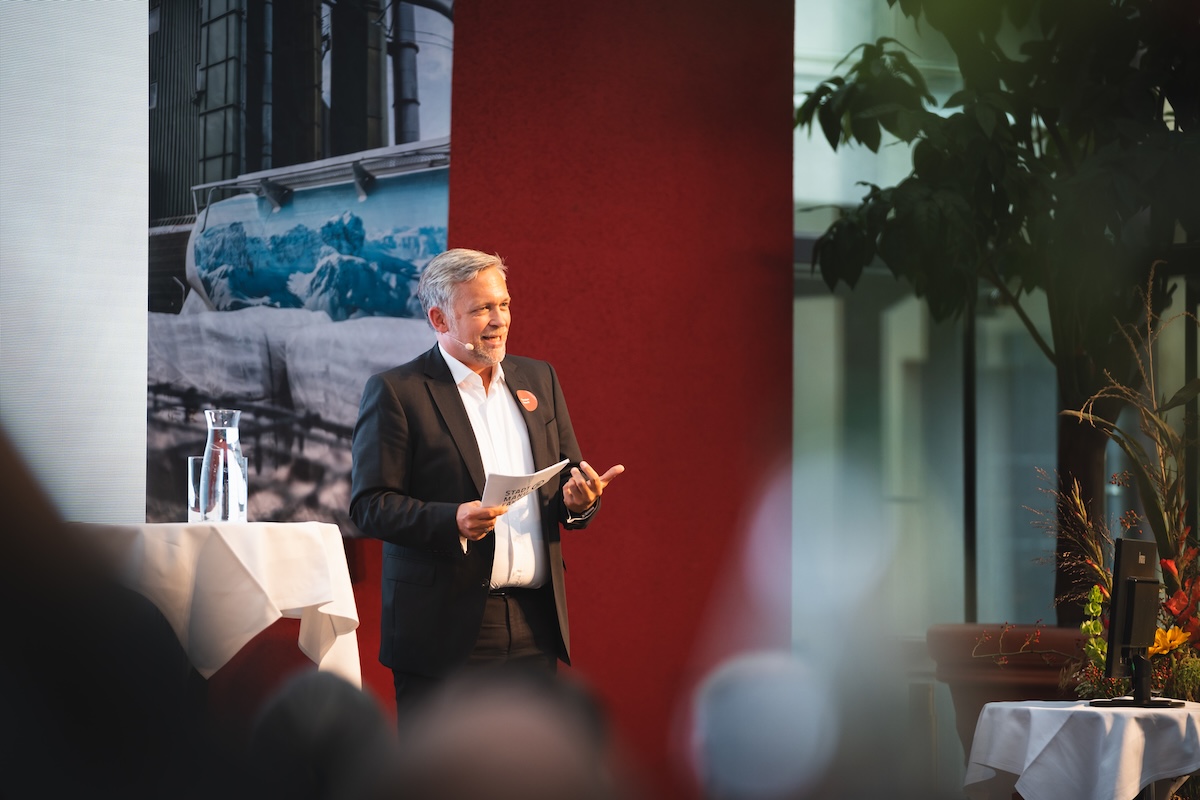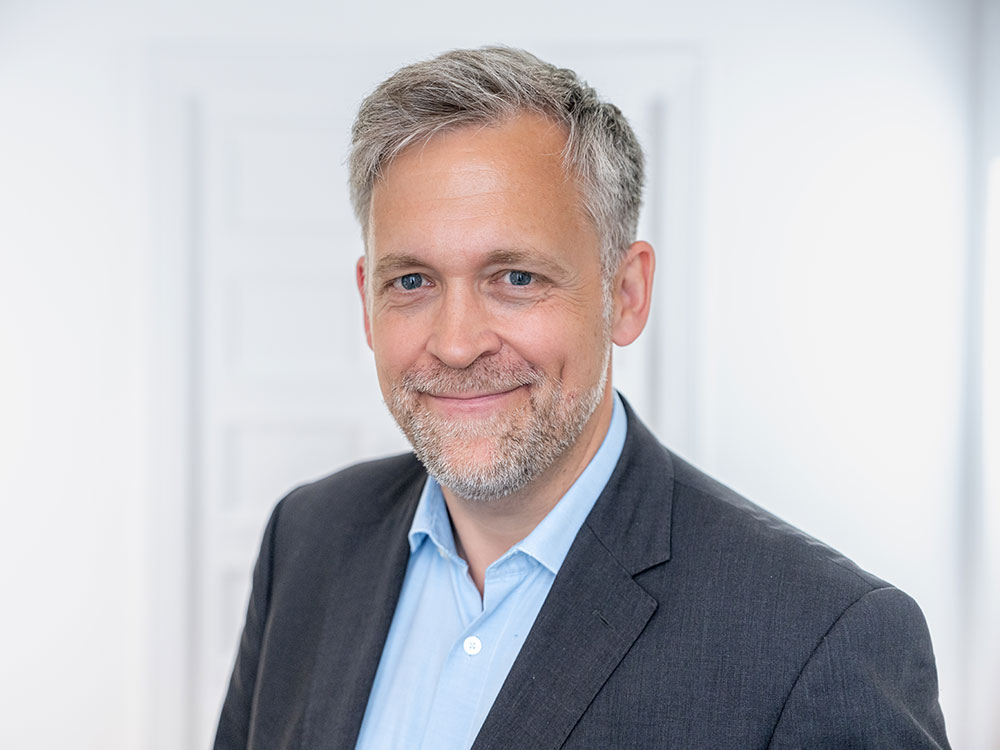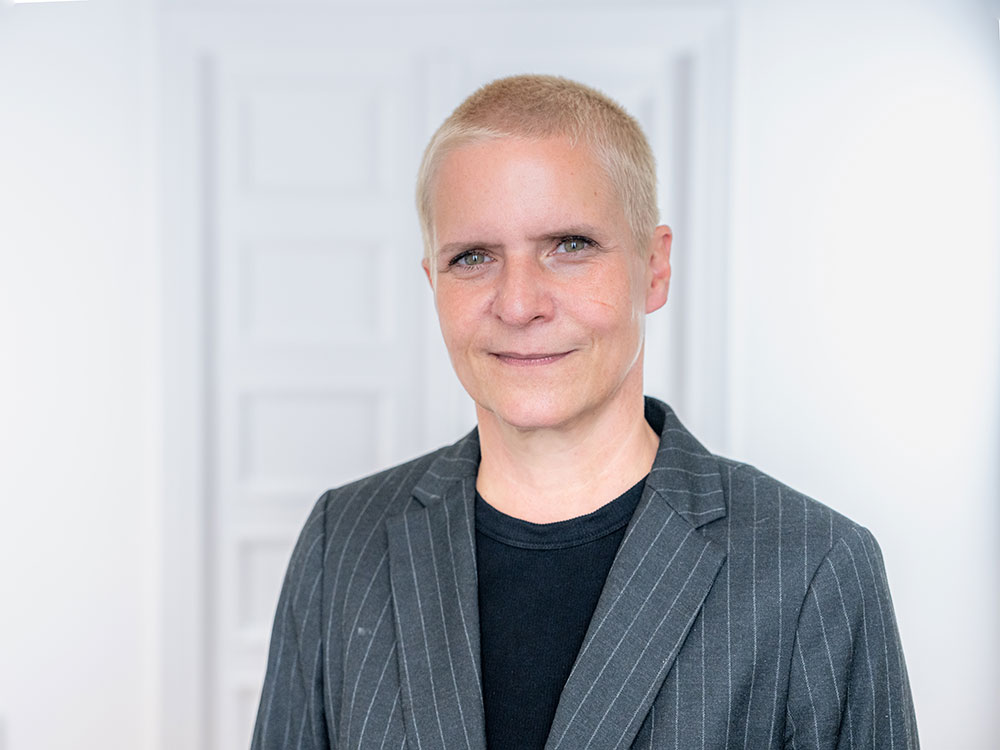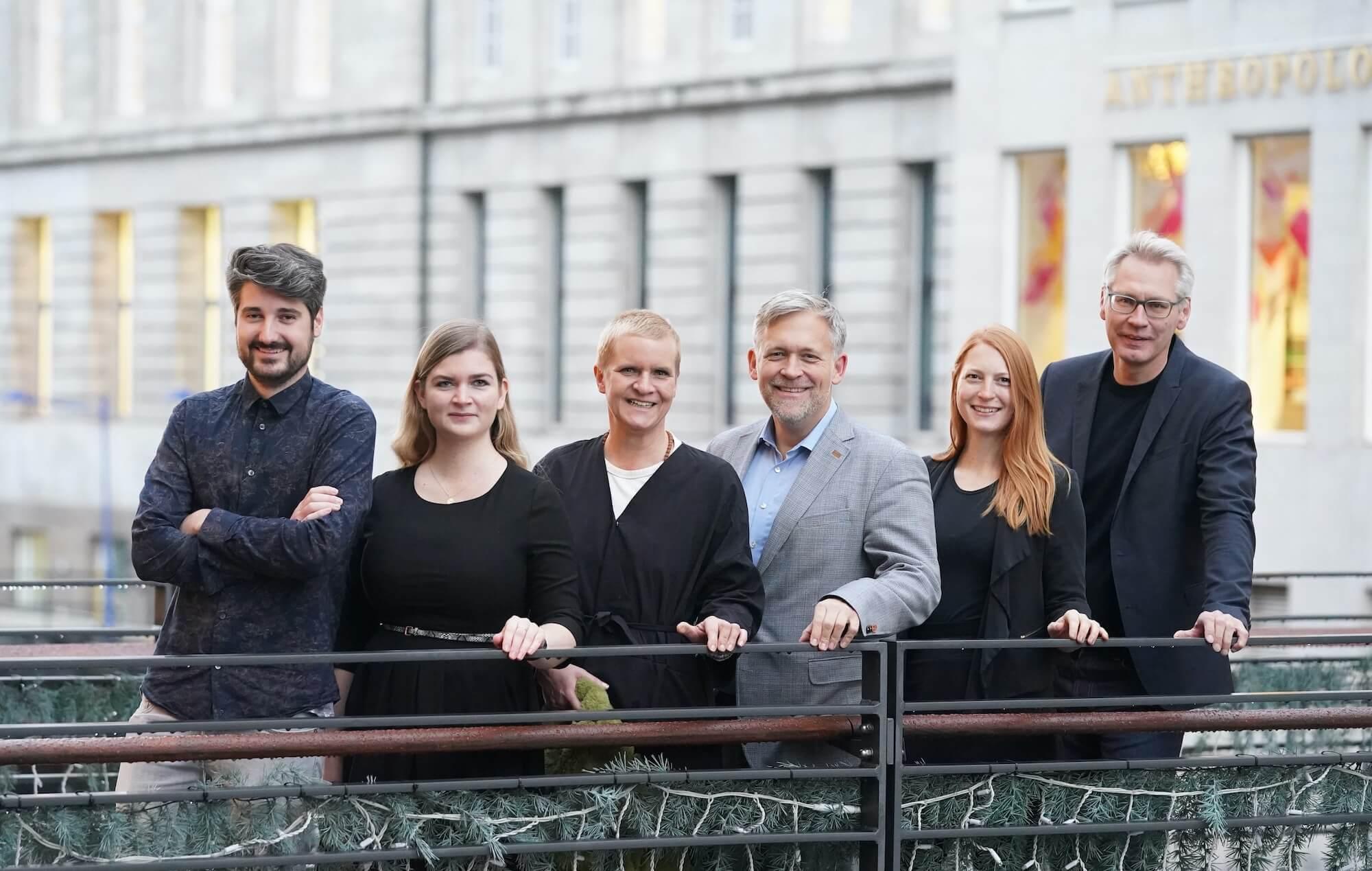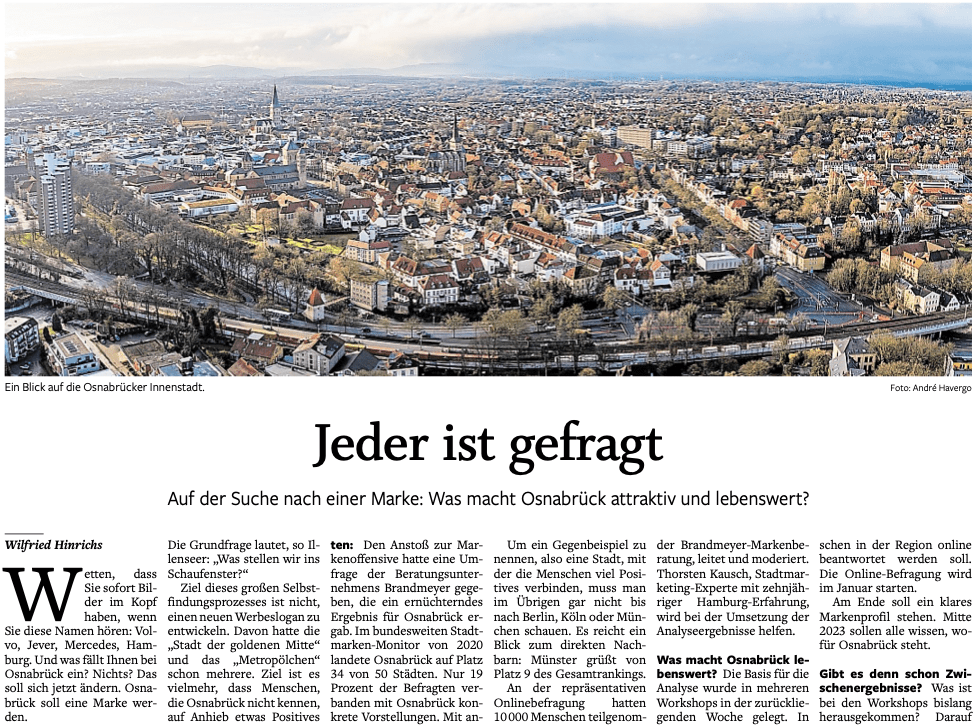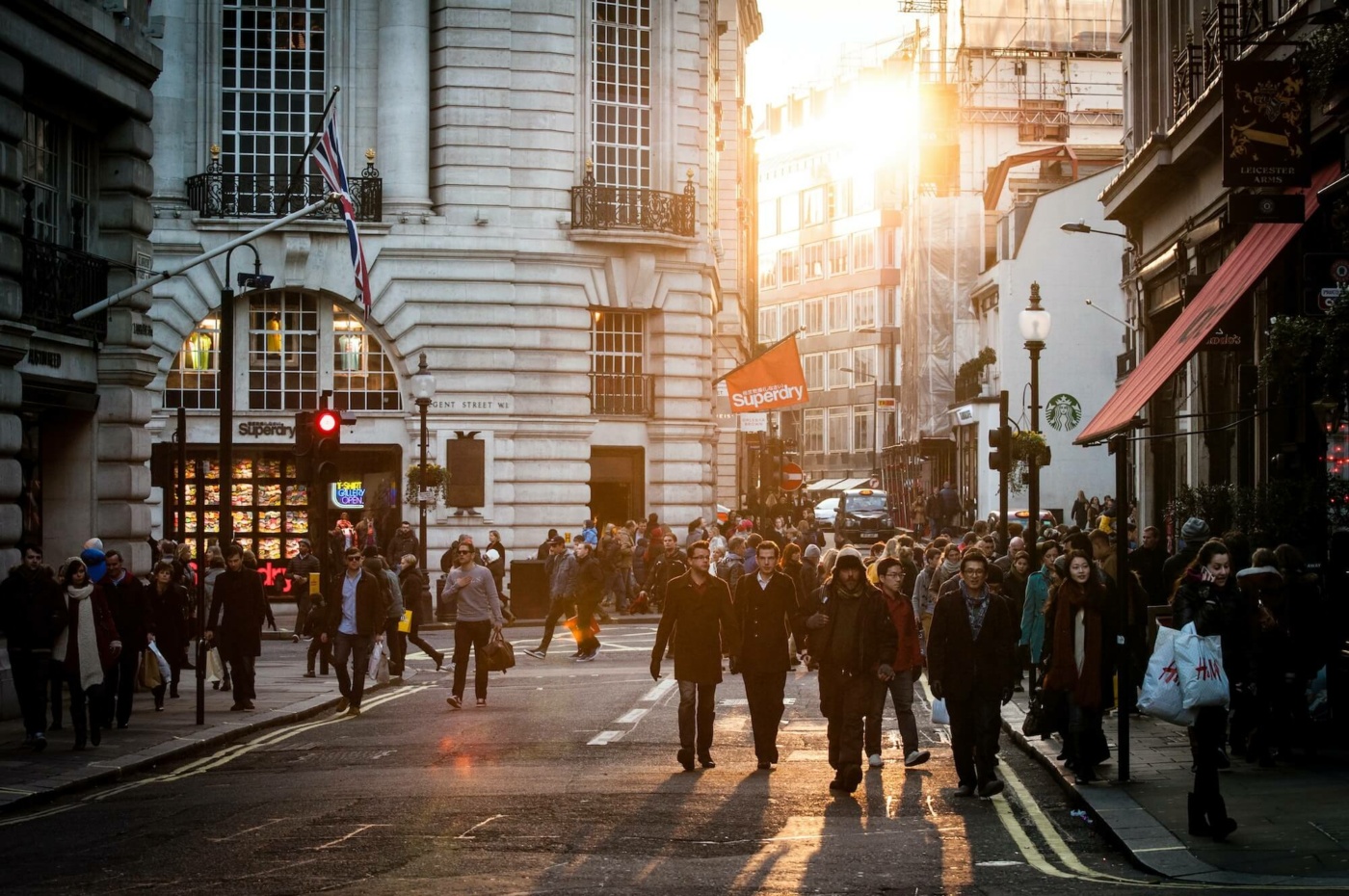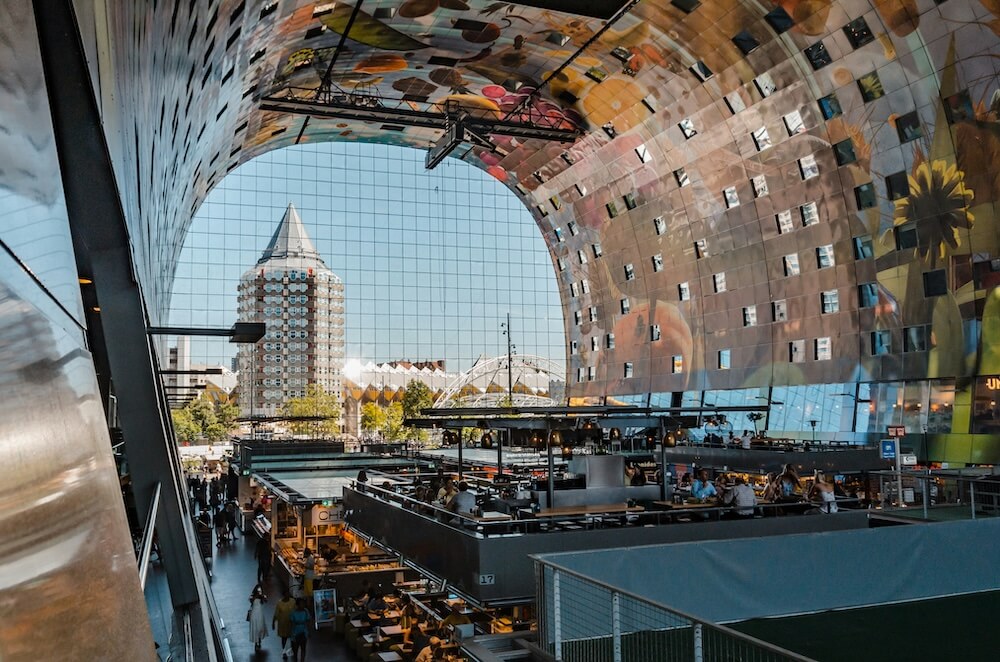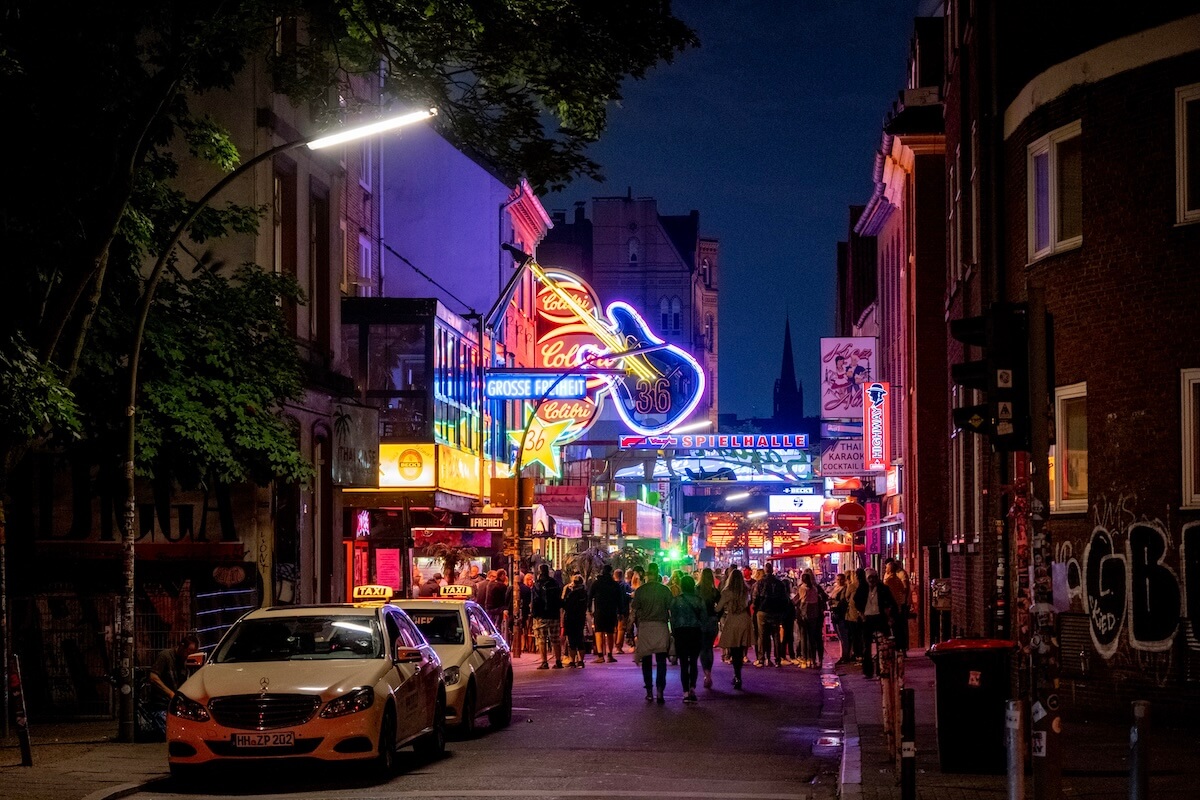CONTENT
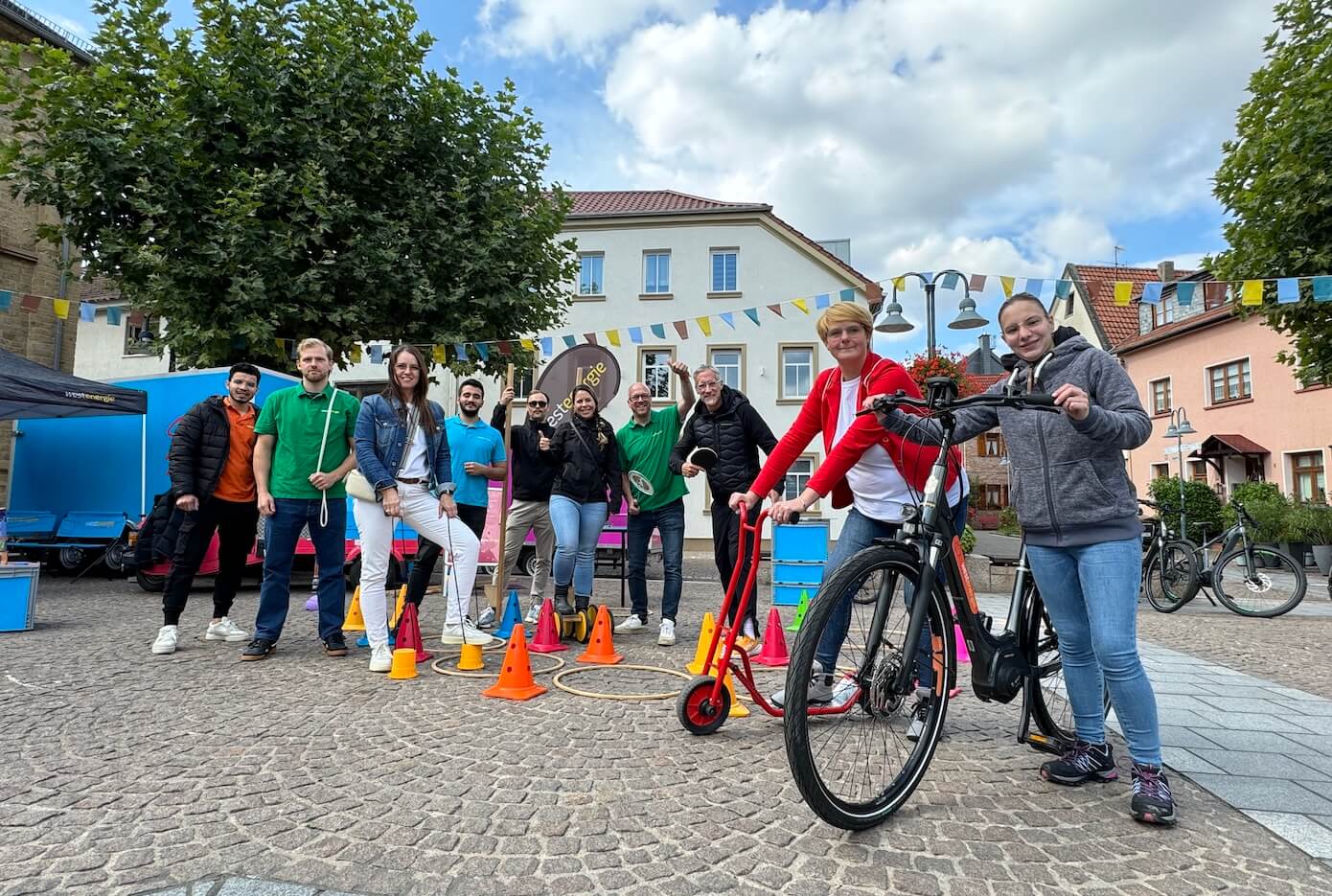
Urban health equals opportunities for the future strength of our cities
In a rapidly changing world, health has found its way into urban development as a social megatrend. Today, health is not just the opposite of illness, but a comprehensive concept based on well-being, quality of life and social participation. This opens up the potential for urban planners and decision-makers to use health strategies as long-term location factors.
My thesis: In the competition between cities for the future and new residents, urban health can even become a decisive factor in place marketing. Urban health promotion offers huge opportunities not only for large cities, but small and medium-sized towns can also benefit from urban health strategies.
But what does “urban health” actually mean ? And what can city stakeholders do to raise the profile of their own city with this topic? – I will give you an overview of “Future healthy city“. I will also use the example of the small town of Bad Sobernheim (Rhineland-Palatinate) to demonstrate how a consistent positioning around urban health can succeed, and how urban society can benefit from it.
Abstract:
Isabell Köster uses the example of Bad Sobernheim to describe how cities can make urban health visible and tangible as a location factor. She presents various aspects and examples of urban health and outlines the positioning process as a healthy city.
Urban health: term and meaning
Definition of urban health
Urban health encompasses a wealth of measures and structures that make a city a healthy, safe and liveable place for people. These include clean air, access to health services, green spaces, sustainable mobility, social participation and environmentally friendly urban planning. The aim is to create and maintain healthy living conditions (physical, mental and social) for all city dwellers in the long term.
Central aspects of urban health
- Urban health protection: Measures for air pollution control, noise protection and greening that promote the quality of life in urban areas.
- Urban health promotion: exercise in everyday life, healthy eating and other preventive measures
- Psychosocial health: The development of social infrastructures and meeting places that strengthen exchange and cohesion.
- Climate adaptation: Environmentally friendly mobility, green roofs and water management as measures to mitigate the consequences of climate change and improve the quality of urban life.
“Health is a megatrend – not only for individuals, but also for cities. The term “urban health” sums up this new way of thinking and offers cities the opportunity to position themselves as healthy, attractive places to live.”
The importance of urban health
The fact that urban health is becoming increasingly important is due to global developments that are also driving the health megatrend: In an increasingly densely populated world with ageing societies, “city” is at best becoming a living space that is not only healthy to live in, but is also designed to be exercise-friendly, environmentally friendly and conducive to community.
From an urban development and place branding perspective, this means that cities can shine as sustainable and future-proof locations with a well-thought-out health strategy – and set themselves apart from other cities.
These global trends are making urban health increasingly important
- Demographic change: The population is getting older, which means that the requirements for age-appropriate and barrier-free cities are increasing.
- Environment and health: Cities are particularly affected by the consequences of climate change. Heat islands, air pollution and extreme weather-related risks call for adaptation measures that also promote the health of the population.
- Social inequalities: Health is often unequally distributed, and urban strategies can ensure equal opportunities by strengthening public health services and infrastructure in socially disadvantaged neighborhoods.
Healthy city: these examples show how it’s done
Numerous international cities show in very different ways how well thought-out health concepts can improve the quality of life and at the same time strengthen a city’s image:
- Copenhagen is particularly committed to sustainable mobility and is internationally renowned for its bicycle-friendliness.
- Vienna is considered a model city for health promotion. Funded projects such as community gardens, urban gardening and green spaces in urban neighbourhoods promote urban health and social cohesion among citizens. Vienna has set itself the goal of becoming a health metropolis (VIENNA 2030 strategy).
- Bogotá has established “Ciclovía”, a weekly happening that has become a global model: Every Sunday, 120 km of roads in the Colombian capital are closed to car traffic and instead belong to pedestrians, cyclists and skaters.
- Hamburg motivates its residents to get fit and exercise with the “Active City” campaign.
- Heilbronn is a finalist for the European Green Capital Award 2026 and applied for the title of European Green Capital with several focus projects.(Winners: Valencia (2024), Vilnius (2025), Guimarães (2026).
- Numerous spa towns focus on health tourism and position themselves as climatic health resorts, climatic health resorts, seaside resorts or spas, depending on their orientation.
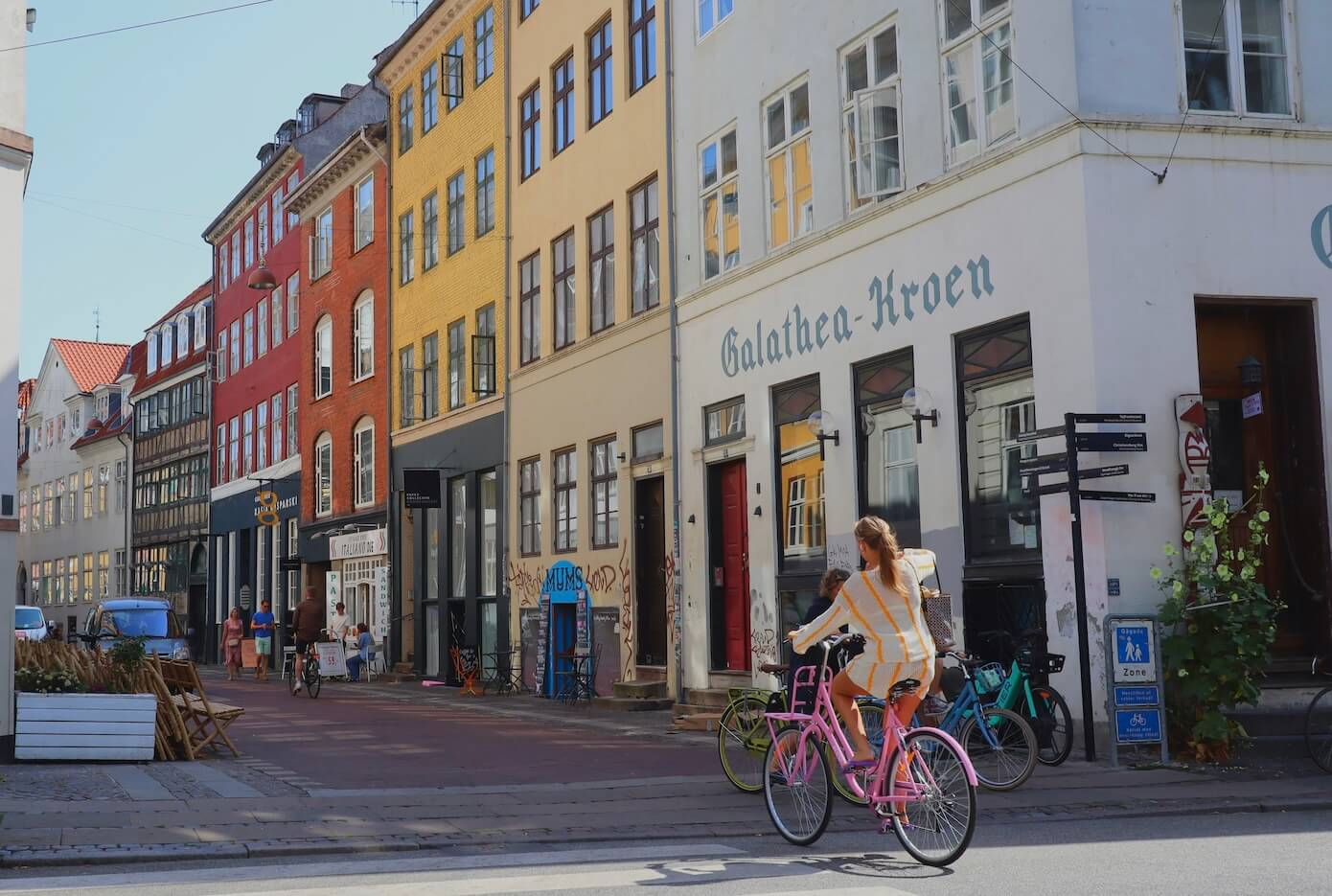
Typical example of urban health: Copenhagen – known for its strong cycling infrastructure and one of the world’s first bicycle highways (opened: 2012) © Tindra Ekholm, Unsplash
Examples of urban health:
With a consistent will to design, targeted measures and perseverance, cities can make a measurable and tangible difference in terms of quality of life and urban identity.
A strategy for urban health is particularly convincing when it is not devised at a desk, but anchored in the city’s DNA. anchored in the city’s DNA and developed together with the citizens. This is exactly the case in Bad Sobernheim.
Bad Sobernheim positions itself as a healthy city
FeelGoodDay: A megatrend comes to life
It’s Sunday, 15.9.2024. Everyone in Bad Sobernheim is up and about early, making final preparations for a very special event: Under the motto “FeelGoodDay – Health, Family, Fitness & Enjoyment”, the first Health Day is taking place in Bad Sobernheim. The team of Anke Wiechert, Ully Mathias and Tatjana Miesem has put together a program that is second to none.Twenty-four regional associations, companies and health providers are also involved.
The first FeelGoodDay in Bad Sobernheim offers, among other things:
- Health checks,
- a family rally,
- Presentations, such as by speaker and sports economist Dr. Oliver Schumann,
- Barefoot path tours and
- numerous sports activities.

FeelGoodDay Bad Sobernheim: A whole town on its feet – for more urban health
The city also offers information stands, hands-on activities and advice on the topics of health, wellness, fitness and enjoyment. In addition to eye tests, hearing tests and body analyses, there will also be micronutrient consultations, blood sugar measurements and exercise classes such as yoga and Zumba. Local vendors present healthy delicacies.
To get from Rathausplatz to one of the parks, you can (if you’re lucky, as numbers are limited) hop on one of the Westenergie sponsored e-bikes sponsored by Westenergie or by Mayor Roland Ruegenberg himself in a bicycle rickshaw. personally. The following day, the Rhein-Zeitung reported on an “all-round success story, planned down to the last detail”.
“The combination of active exercise, relaxation and an inspiring atmosphere confirmed Bad Sobernheim as the ideal host. Our town became the stage for a day full of energy, joie de vivre and shared experiences that will live long in the memory.”
Holistic health is part of Bad Sobernheim’s DNA
Bad Sobernheim is the smallest town that has been supported by the Stadtmanufaktur since 2019 is undergoing a profiling process (funded by the German government’s ZIZ program). Participation is a top priority in the town of 6,500 inhabitants: From the very beginning, municipal employees from the daycare center, school and building yard are just as consistently involved as stakeholders and groups of actors.
The three areas of strength of the town of Bad Sobernheim
Three areas in which the city has a lot to offer can be clearly identified during the positioning process:
- Bad Sobernheim offers a beautiful natural experience in the heart of the Naheland region.
- Bad Sobernheim offers a unique range of health and wellness facilities.
- Bad Sobernheim offers enjoyment and culture in a historic setting.
The health aspect flows across all three segments, with a focus on prevention and naturopathy. Anke Wiechert, Director of the local history museum and co-initiator, explains:
“In the positioning process and the associated strengthening of the town brand ‘Bad Sobernheim – THE Felke town’ in the area of health, recourse to the healing methods of Emanuel Felke (1856-1926) and his Felke Cure, which was introduced here in 1915, played a central role. The so-called ‘clay pastor’ laid the foundation for the health orientation of our town with his idea of simple, natural living, his holistic approach and the common natural healing methods of his time.”
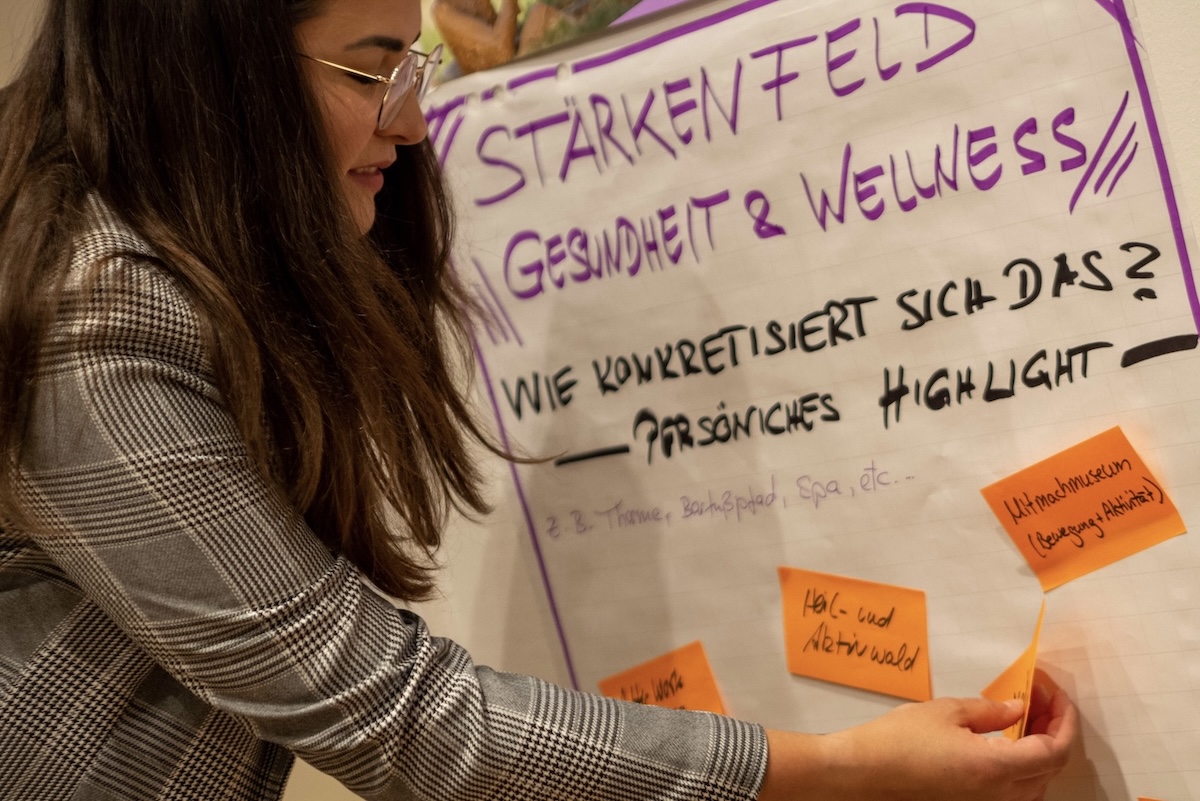
Workshop on the areas of strength: Bad Sobernheim scores with health and wellness
© Katrin Ramlow
Other health experts were attracted by the enterprising priest. Katharina Schroth, for example, developed her scoliosis-specific physiotherapy in Bad Sobernheim, for which the local Asklepios Clinic is now internationally renowned. And Emil Hevert founded his company Hevert-Arzneimittel after studying Felke’s methods and remedies. Health and wellness resorts such as the Menschels Vitalresort, the Hotel Maasberg Therme and the BollAnts also refer to Felke’s healing earth therapies and “medical wellness”.
Strategies for urban health: celebrating successes, daring to develop
The fact that the first FeelGoodDay in Bad Sobernheim can be celebrated as a success is no coincidence in view of the town’s almost health-soaked DNA – but it is also no sure-fire success or guarantee for the future. It takes structures, resources, ideas, networks and the will to develop further in order to develop a tailor-made, sustainable strategy and measures for the future as a healthy city .
In Bad Sobernheim, it was clear from the outset that the town would not be able to manage an event of this magnitude with its limited human resources alone. FeelGoodDay 2024 was only possible thanks to the involvement of the various experts and many committed citizens. When the ZIZ funding program comes to an end in summer 2025, there will be less financial resources available, so the city and urban society will be even more in demand.

Campaigns like FeelGoodDay need a dedicated team – and many partners © Katrin Ramlow
7 tips for positioning yourself as a healthy city
So Bad Sobernheim has it: the strategy and the history of urban health . But all cities in Germany (and beyond) are called upon to address the health megatrend. And to ask themselves: How can we bring urban health to our city? Here are some tips for positioning ourselves as a healthy city – with lots of experience from our projects.
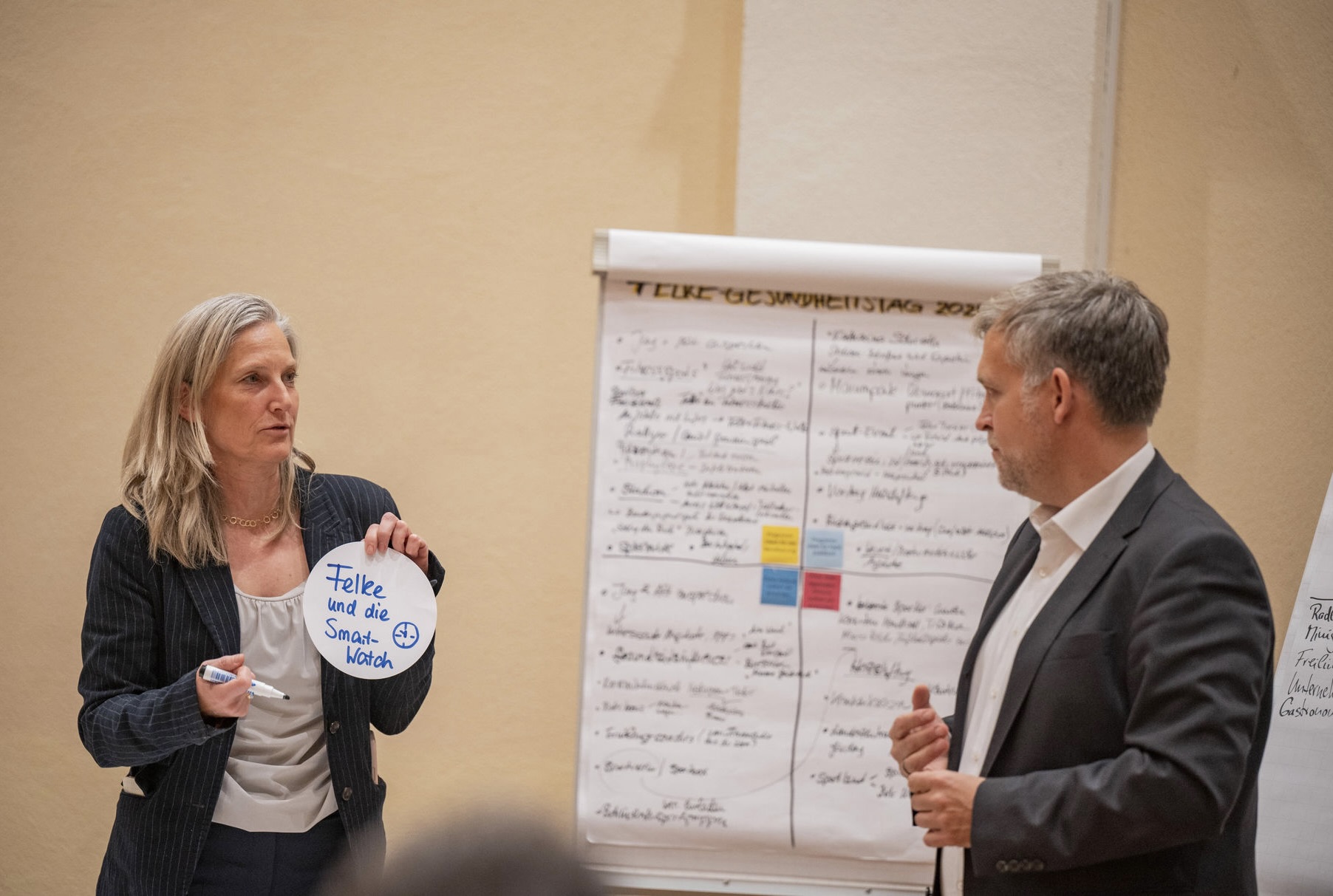
From DNA to positioning: Isabell Köster and Thorsten Kausch (Stadtmanufaktur GmbH) at the strategy workshop in Bad Sobernheim © Katrin Ramlow
Conclusion: A healthy city is a city with a future
Pioneering cities such as Vienna, Copenhagen and Hamburg are already proving this: The potential of urban health is huge – and its importance will continue to grow due to global developments.
“The city of the future takes a holistic approach to health. Healthy cities are created where people can move, connect and breathe deeply.”
A strategy and measures with long-term success require great commitment and a lot of creative drive right across the city. This is especially true for small and medium-sized towns like Bad Sobernheim. But the success proves the town and its focus on urban health right: according to a survey, the people of Bad Sobernheim would organize another FeelGoodDay as early as 2025.
We wish Bad Sobernheim staying power – and all other cities lots of inspiration and activating ideas for their very own path to the healthy city of the future.

Isabell Köster
is a project manager specialising in strategic narratives and the cultural industry. Isabell likes to spend her free time swimming - preferably outdoors
